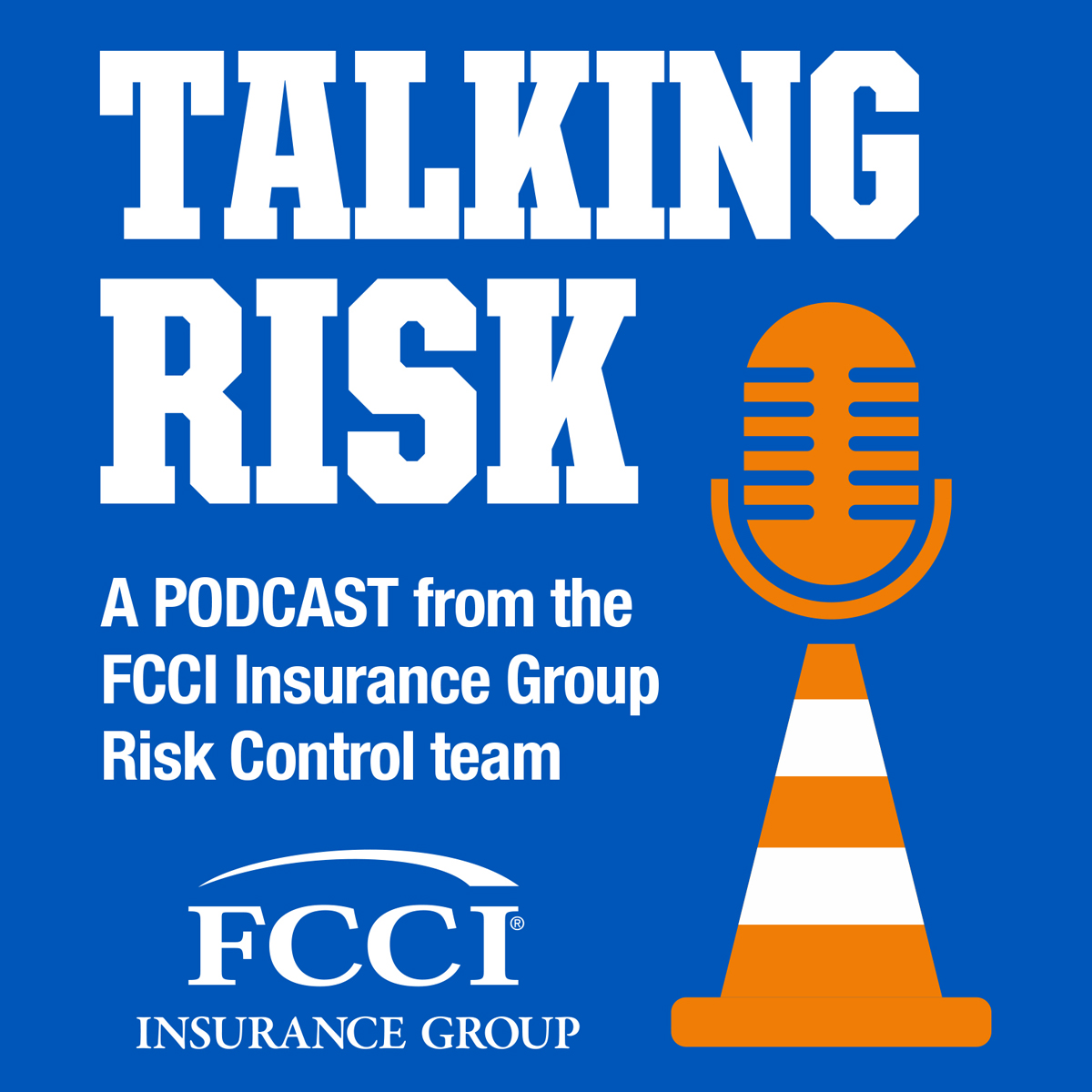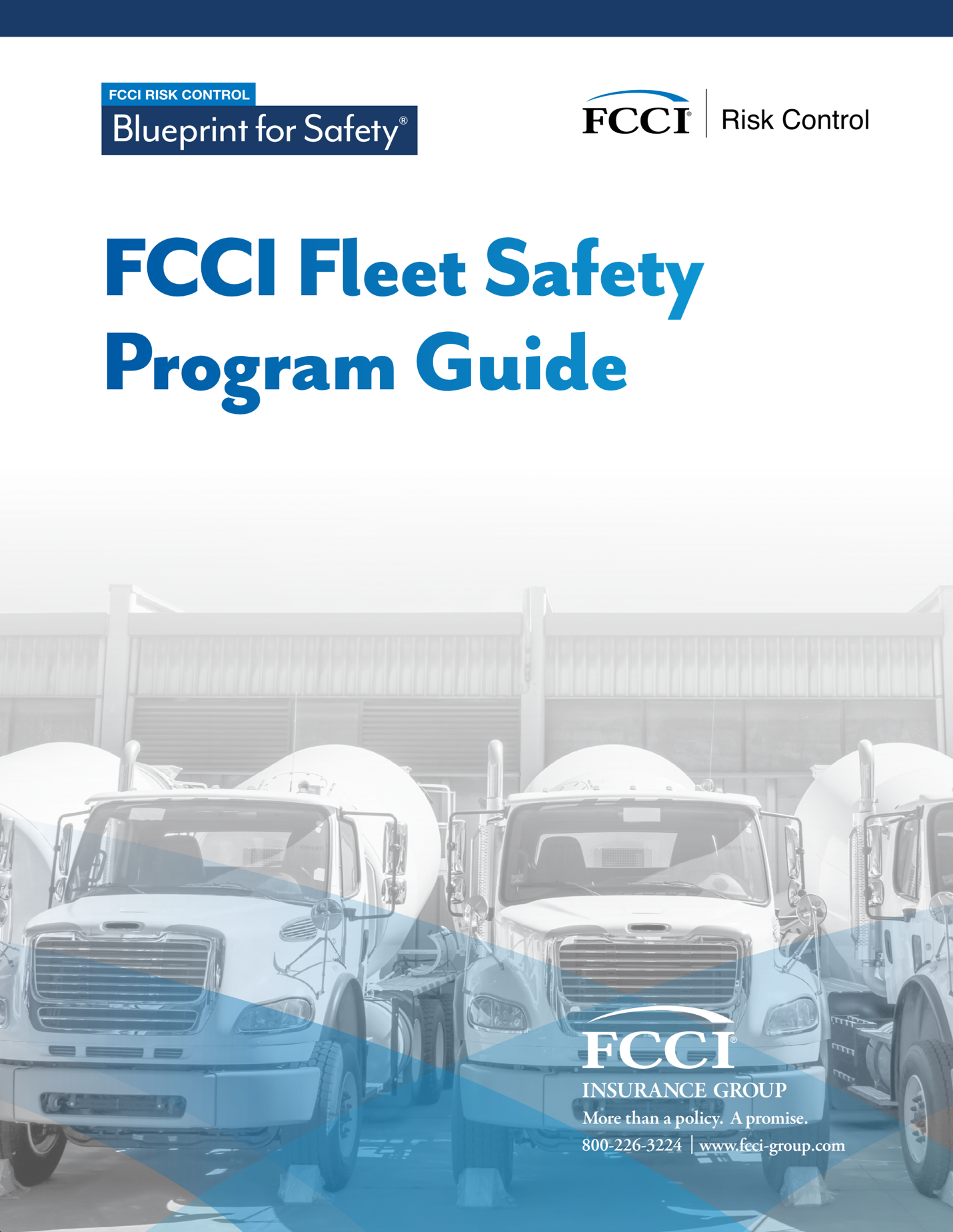Find an agent in your area
Risk Control Resources
We help you
mitigate risk
We have the risk control tools and resources to help your business mitigate risk. FCCI's Blueprint for Safety® is one convenient, online risk management tool that helps you discover ways to reduce losses, preserve assets and protect your workforce.
FCCI risk management resources include:
- 10-Step Manual
- Risk Control Manual
- Fleet Safety Program Guide
- Return-to-Work Program Guide
- Drug-Free Workplace Program
- Weekly Safety Meeting Topics
- Safe Driving Tips and Strategies
- General Liability Risk Control Program
- Safety Training Video Library
- Learning Management System (LMS)
- Risk Solutions Network Course Catalog
- Thermography Services
- Hurricane Preparedness Checklist

Safety Training Video Library
FCCI's Safety Training Video Library offers more than 700 streaming videos on safety and compliance topics. This library is another valuable resource our policyholders can use as part of their overall risk management plan at no additional cost. For additional questions or technical support for FCCI's Training Video Library, please contact your Risk Control Consultant or email our Risk Control Helpline at RiskControlHELPLINE@fcci-group.com.
CLICK HERE FOR SAFETY TRAINING VIDEO LIBRARY COURSE LISTThe video library provides:
- Easy self-registration process
- Unlimited video views
- A large selection of high quality videos
- Fresh content
- Videos in Spanish
- Downloadable quizzes
Training topics include:
- General Safety
- Office Safety
- Personal Protection Videos
- AG Safety
- Forklifts & Material Handling
- Restaurant Safety
Risk Control Podcasts
Listen to host Brian Harris, Director of Risk Control, and Ralph Hines, Risk Control Specialist, discussing all things risk. Topics include workplace safety, hazard mitigation, insurance tech, industry insights, and more.
- Talking Risk Episode #17 - National Safety Month
- Talking Risk Episode #16 - Electrical Safety
- Talking Risk Episode #15 - Distracted Driving
- Talking Risk Episode #14 - Fire Prevention, Chuck Thompson, E-Fire USA
- Talking Risk Episode #13 - Avoiding Rear-End Collisions
- Talking Risk Episode #12 - Winter Driving
- Talking Risk Episode #11 - Risk Solutions Network
- Talking Risk Episode #10 - Agribusiness Safety
- Talking Risk Episode #09 - Shane Ray, National Fire Sprinkler Assoc.
- Talking Risk Episode #08 - Fall Prevention Awareness
- Talking Risk Episode #07 - Bob Krueger, VP at SafetyFirst
- Talking Risk Episode #06 - Fleet Safety Best Practices
- Talking Risk Episode #05 - What to Expect During a Risk Control Visit
- Talking Risk Episode #04 - Automatic Sprinkler Systems
- Talking Risk Episode #03 - Fundamentals and the Power of Three
- Talking Risk Episode #02 - Trenching
- Talking Risk Episode #01 - Keeping Workplaces Safe with Ralph Hines, FCCI
The podcasts are available on Amazon Music, Apple Podcasts, Buzzsprout, Castbox, Goodpods, Spotify and YouTube.
Vendor Alliance Program
We put our policyholders in touch with partners that can help strengthen workplace safety programs and reduce the risks workers face every day. With significant discounts on programs like telematics and MVR monitoring, programs to monitor and reduce cell phone usage for drivers, and providers of protective footwear and clothing, our Vendor Alliance partners can be life savers!
Learn more about the FCCI Vendor Alliance Program
Working Near Traffic
Every year, between 600 and 700 worker fatalities are reported in work zone areas. Employers must take measures to protect workers from vehicular traffic and to control traffic within a work area. We've put together a short list of some best practices that help mitigate the risks for employees in these environments.
Key Engineering Controls and Work Practices:
- Develop and use a site plan that provides traffic flow details
- Do not drive in reverse gear with an obstructed rear view, unless the vehicle has an audible alarm or a signaler is used
- Ensure spotters/heavy equipment operators share communication equipment or agree on and use appropriate hand signals
- Provide barricades around excavations and structures, such as debris reduction observation towers
General Personal Protective Equipment:
- Hard hat for overhead impact or electrical hazards
- Eye protection with side shields
- Gloves chosen for the job hazards expected
- ANSI-approved protective footwear
- ANSI high-visibility safety apparel
Distracted Driving
Engaging in activities that take your focus away from the primary task of driving can endanger you, passengers, and bystanders.
Distracted driving is on the rise, with texting while driving being a major contributor. Texting while driving is especially dangerous because it causes you to take your hands off the wheel and your eyes (and mind) off the road. On average, your eyes are off the road for 4.5 seconds to read or send a text. At 55 mph, that's the equivalent of driving the length of a football field blindfolded.
Driver Awareness and Safety Training includes additional resources and information on how to help combat distracted driving.
I wanted to take a moment to show my sincere appreciation for your diligence in training our entire company in the recent defensive driver class. I appreciate the time you spent with us, and it is very obvious that you have a passion for saving lives. There were numerous comments from our employees that saw these same characteristics as I do. We appreciate the representation of FCCI on our behalf."— Chief Operating Officer, construction industry policyholder Jacksonville, FL
Fleet Safety Best Practices
The importance of hiring and training safe drivers and maintaining vehicles helps save lives and avoid accidents. If you or one of your employees use an automobile for company business and have an accident, your company could be liable for the costs, regardless of who owns the vehicle. Implementing fleet safety best practices and having the proper insurance coverage is extremely important.
Benefits of a formal fleet safety program include:
- Lower insurance premiums
- Compliance with DOT, OSHA and state motor carrier regulations
- Reduction of costs associated with damaged cargo
- Increased customer satisfaction
- Higher employee morale
Best practices can improve business safety:
- Driver screening: Review motor vehicle records
- Driver training: Investing in drivers pays dividends
- Driver supervision: Helps put training into action
- Driver policies: Discourage distracted driving habits
- Maintenance & Inspection Program
- Accident Investigation
Fleet Safety Programs
Whether your company uses a single vehicle or an entire fleet, you need a fleet safety program. Fleet safety programs help companies communicate procedures designed to promote the safety and well-being of employees by reducing injuries and expenses that result from accidents. We want to help you manage and mitigate those risks.
Automobile crash severity is on the rise across the nation, a factor that could cause rate increases. Now more than ever, we're here to help you focus on fleet safety.


